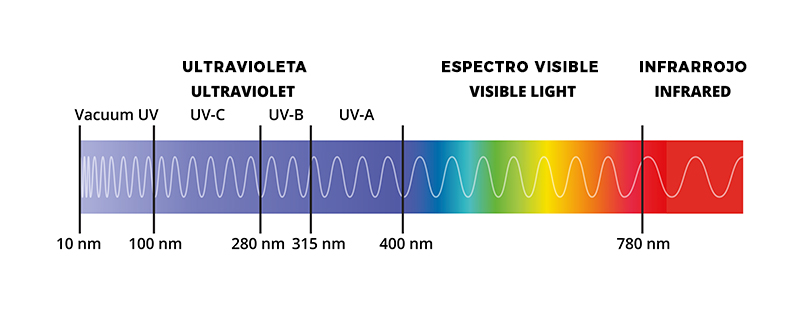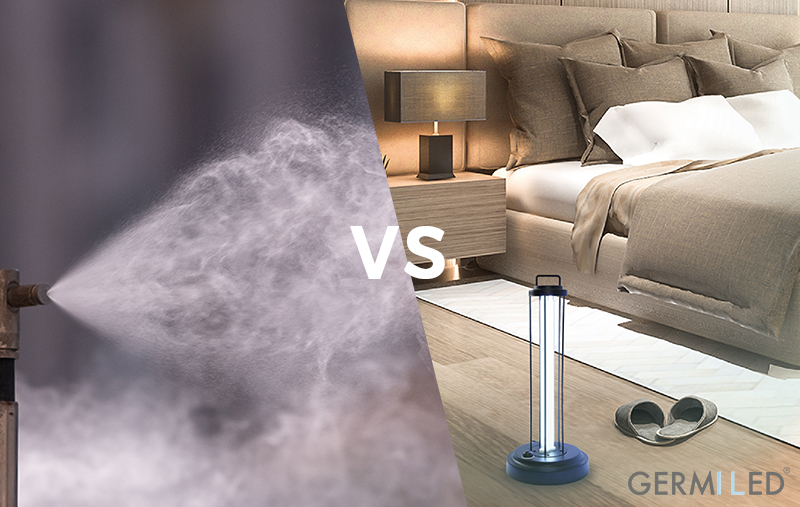Disinfection has been shown to be the key to preventing disease transmission, as it reduces significantly levels of pathogenic microorganisms during our daily life (homes, transport, hospitals, clinics, hotels, restaurants, shops, gyms).
Nowadays there is a range of different alternatives to carry out disinfection, but sometimes we do not know which dispositive fits better with our needs. It is really important to be clear that its use must be safe and effective.
Among physic methods, UV radiation stands out. As we have already explained in previous posts, it is one type of non-ionizing radiation. The UV-C type is found between 200 and 280 nm in the electromagnetic spectrum known as germicide. Below 200 nm we find the vacuum UV, which is not used due to the fact that all of the molecules absorb in it, and performing in this range implies instrumental restrictions; furthermore, at 185 nm wavelength these lamps generate ozone from oxygen.

What is safer? A UV-C lamp with or without ozone?
Ozone is one of chemical methods that has grown more in disinfection industry. However, the specific doses of ozone to be effective are yet unknown. This method is still in revision by European Chemical Agency and it is not on the official viricidal approved list elaborated by the Ministry of Health.
Ozone is a gas formed by three oxygen atoms that perform as a powerful oxidant.
The equipment characteristics for disinfection with ozone are:
- Needs ventilation after use
- It may react with flammable substances
- It must not be used in the presence of people and animals
- It causes adverse effects at respiratory system, skin irritation and eye damage
- It tends to be cheaper
To get germicidal performance but avoid ozone formation, we need to work at 253,7 nm wavelength, which is generated with special materials, this the reason that they tend to be less economical.
The main characteristics of germicidal lamps are:
- They eliminated up to 99,9 % of germs: viruses, bacteria and fungi
- Ventilation is not required after its use
- They avoid respiratory problems; it is optimum for vulnerable people
- They must not be used in the presence of people and animals
- Exposition to skin and eyes must be avoided
Therefore, all of our Germiled models achieve the UNE 0068:2020 specification and are provided with a presence detector to avoid means inconveniences for an accidental exposition. So, we can be calm, because UV-C light used in the right way, does not represent any danger for us.
If I buy a UV-C lamp, won´t I clean anymore?
It is convenient to know that UV-C radiation does not replace conventional disinfection methods. It does not penetrate into surfaces, as a consequence Germiled disinfection in shaded areas is not as effective as in clear zones, this fact may give a false cleaning sensation. Because of this described characteristic, the perfect match is to mix both methods. First, carry out a conventional cleansing (it may not be 100% effective as it is a manual process). Secondly, after leaving the room, activate Germiled germicidal UV-C lamp. Following these steps, a suitable disinfection is ensured in your surfaces and air.
If you need additional or professional information for your business, do not hesitate to contact us and get personalized help.

